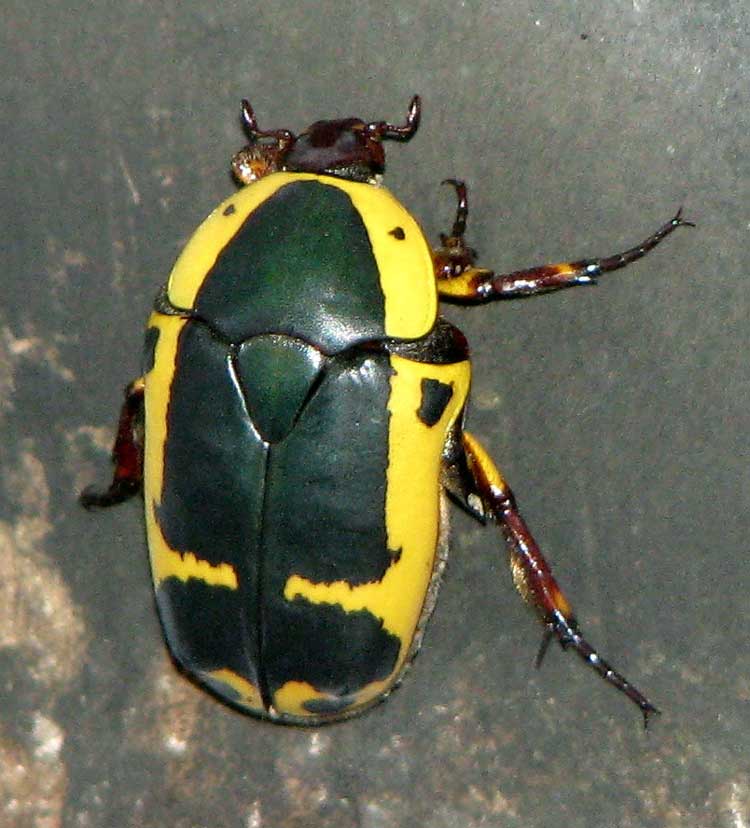
Pachnoda sinuata (*)
Superregnum: Eukaryota
Cladus: Unikonta
Cladus: Opisthokonta
Cladus: Holozoa
Regnum: Animalia
Subregnum: Eumetazoa
Cladus: Bilateria
Cladus: Nephrozoa
Cladus: Protostomia
Cladus: Ecdysozoa
Cladus: Panarthropoda
Phylum: Arthropoda
Subphylum: Hexapoda
Classis: Insecta
Cladus: Dicondylia
Subclassis: Pterygota
Cladus: Metapterygota
Infraclassis: Neoptera
Cladus: Eumetabola
Cladus: Endopterygota
Superordo: Coleopterida
Ordo: Coleoptera
Subordo: Polyphaga
Infraordo: Scarabaeiformia
Superfamilia: Scarabaeoidea
Familia: Scarabaeidae
Subfamilia: Cetoniinae
Tribus: Cetoniini
Subtribus: Cetoniina
Genus: Pachnoda
Species: Pachnoda sinuata
Subspecies: P. s. sinuata – P. s. calceata – P. s. flaviventris – P. s. nicolae – P. s. machadoi – P. s. puncticollis
Name
Pachnoda sinuata (Fabricius, 1775)
References
Arndt Löwenberg: Exotische Käfer, Pflege und Zucht von Rosen- und Riesenkäfern im Terrarium, bede, Ruhmannsfelden 1999. ISBN 3-933646-44-8
www.hier-krabbelts.de
Pachnoda sinuata, the garden fruit chafer or brown-and-yellow fruit chafer, is a species of beetle found in Namibia and South Africa.
Subspecies
Pachnoda sinuata calceata Harold, 1878
Pachnoda sinuata flaviventris (Gory & Percheron, 1833)
Pachnoda sinuata machadoi Rigout, 1989
Pachnoda sinuata nicolae Rigout, 1986
Pachnoda sinuata sinuata (Fabricius, 1775)[1]
Identification
The species is part of the large family Scarabaeidae, which also include the scarabs and dung beetles. This species is large with a smooth carapace. Colouration is variable but basically yellow with dark brown central area broken by yellow spots and a transverse yellow line across the rear of the elytra.
Diet
Adult beetles feed on flowers and fruit, often destroying them in the process which makes them unpopular with gardeners. While commonly found on exotic plants like roses and camellias, these beetles also feed on a range of indigenous plants including Acacia.
Breeding
Adults lay their eggs in manure and compost heaps or among plant roots. The pupae develop inside large, egg-shaped protective clay shells.
Biology
This species is a popular prey species for many species of bird, such as red-winged starlings and hadeda ibises.
Habitat
It ranges widely in South Africa and thus are found in a variety of habitats. They are commonly found in gardens.
References
Biolib
Picker, Griffiths & Weaving - Field Guide to Insects of South Africa (Struik 2002) ISBN 1-77007-061-3
Rigout (J.), 1989, The Beetles of the World, volume 9, Sciences Nat, Venette [1]
Retrieved from "http://en.wikipedia.org/"
All text is available under the terms of the GNU Free Documentation License

